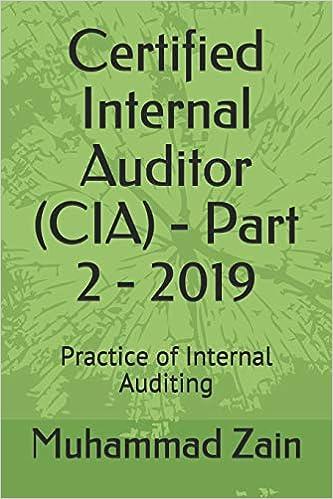Answered step by step
Verified Expert Solution
Question
1 Approved Answer
Question 2 ( 4 0 marks ) Maritime Hardware Company's year end is December 3 1 , and they use a perpetual inventory system. The
Question marks
Maritime Hardware Company's year end is December and they use a perpetual
inventory system. The following selected transactions were carried out during Year :
October Purchased an office building for $ plus GST by
issuing a year bond for the building and paid the GST in cash. The
bond interest will be paid every months. is the market rate for this type
of bond.
October Sold inventory costing $ to a customer for $ plus
GST and PST nno sales discount offered
November Received full payment for the October sale.
November Purchased inventory costing $ plus GST n
December Paid in full for the November purchase.
December Accrued interest on the bond. Count exact days. Don't count
the first day October Do count the last day December
December Accrued warranty expense on $ of sales for the year
at the rate of of sales.
December Accrued $ in estimated income tax expense.
Additional transactions were carried out during Year :
January Paid the GST owing for the last quarter, which included $
collected from customers and $ paid on purchases.
April Paid the first month interest installment on the year bond.
Count exact days. Remember to exclude the first day and count the last day.
This was not a leap year.
May Paid $ in repair costs for defective products sold under warranty.
Required
Record the transactions in the general journal. Use the exact number of days to
calculate any interest accruals and payments. Remember the first day is excluded
and the last day is counted.Maritime Hardware Company's year end is December and they use a perpetual inventory system. The following selected transactions were carried out during Year :
October Purchased an office building for $ plus GST by issuing a year bond for the building and paid the GST in cash. The bond interest will be paid every months. is the market rate for this type of bond.
October Sold inventory costing $ to a customer for $ plus GST and PST nno sales discount offered
November Received full payment for the October sale.
November Purchased inventory costing $ plus GST n
December Paid in full for the November purchase.
December Accrued interest on the bond. Count exact days. Dont count the first day October Do count the last day December
December Accrued warranty expense on $ of sales for the year at the rate of of sales.
December Accrued $ in estimated income tax expense.
Additional transactions were carried out during Year :
January Paid the GST owing for the last quarter, which included $ collected from customers and $ paid on purchases.
April Paid the first month interest installment on the year bond. Count exact days. Remember to exclude the first day and count the last day. This was not a leap year.
May Paid $ in repair costs for defective products sold under warranty.
Required
Record the transactions in the general journal. Use the exact number of days to calculate any interest accruals and payments. Remember the first day is excluded and the last day is counted.

Step by Step Solution
There are 3 Steps involved in it
Step: 1

Get Instant Access to Expert-Tailored Solutions
See step-by-step solutions with expert insights and AI powered tools for academic success
Step: 2

Step: 3

Ace Your Homework with AI
Get the answers you need in no time with our AI-driven, step-by-step assistance
Get Started


